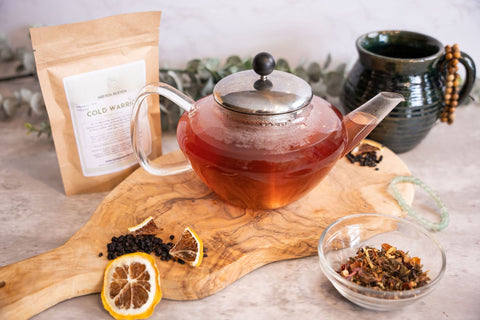The Timeless Tradition of Herbal Tea: A Journey Through History
Herbal tea, a soothing elixir cherished by cultures across the globe, boasts a rich tapestry of history and tradition. Unlike its caffeinated counterparts, herbal tea is not derived from the Camellia sinensis plant but is instead an infusion of leaves, flowers, bark, or roots of various plants, each offering unique flavors and potential health benefits. This age-old beverage has permeated societies for centuries, evolving with the customs and beliefs of the people who cherished its soothing allure.
The origins of herbal tea can be traced back thousands of years to ancient civilizations. In Egypt, papyrus scrolls dating as far back as 1550 BCE reveal the use of herbal infusions for medicinal purposes. Egyptians valued herbs like chamomile, peppermint, and licorice root, recognizing their ability to promote well-being and treat ailments.
Simultaneously, in ancient China, the practice of brewing herbs and other botanicals was becoming integral to traditional medicine. Emperors and commoners alike valued these infusions not only for their healing properties but also for their aromatic and flavorful qualities. The Chinese relied on ingredients such as ginger, ginseng, and lotus flowers to create soothing beverages that harmonized the body and mind.
As the world advanced, the use of herbal tea spread far and wide, adapting to the customs and flora of each region. In India, the practice of Ayurveda embraced herbal infusions, using combinations of plants and spices to balance the body's energies. Similarly, Native American tribes utilized local botanicals like mint, echinacea, and sage in their herbal teas for both medicinal and ceremonial purposes.
In the Middle East, the infusion of herbs became an integral part of social and cultural rituals. Mint tea, for instance, became a symbol of hospitality, offered to guests as a sign of welcome and friendship.
Herbal tea gained momentum in Europe during the medieval period, primarily through monastic gardens where monks grew and studied various medicinal herbs. These gardens became centers of knowledge where herbal remedies were developed and refined. With the onset of the Renaissance, the curiosity for botany and natural sciences further fueled the popularity of herbal teas.
European herbalists cataloged countless recipes, each blending different herbs to address specific ailments. Herbal tea became a staple in households, regarded as both a remedy and a pleasure.
Today, herbal tea enjoys a global renaissance, embraced by those seeking a natural and holistic approach to wellness. The modern world appreciates herbal tea not only for its historical and traditional significance but also for its versatility and accessibility.
With a heightened awareness of health and wellness, people gravitate toward herbal teas for their potential benefits. Chamomile for relaxation, peppermint for digestion, and hibiscus for its rich antioxidants are just a few examples of how herbal teas continue to be used for their health-promoting qualities.
The journey of herbal tea through history is a testament to humanity’s enduring quest for health, comfort, and connection. Each cup allows us to partake in a ritual cherished by generations before us, blending tradition with the simple pleasures of life. Whether enjoyed in solitude or shared in the company of friends, herbal tea remains a timeless testament to the art of living well.


